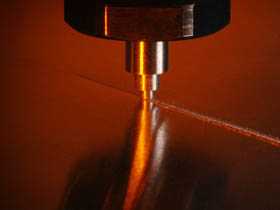Let me confess. I know precious little about welding. Of course, having written for many years for Stainless Steel World I do realise that welding is an important fabrication tool and that quite a number of techniques are possible. But I had always viewed welding as somewhat antiquated, something done by men wearing dirty visors and involving a lot of smoke and noise.
However, having recently visited TWI in England my perception has definitely changed. Whilst I still have a lot to learn, I was amazed at how much research and development TWI and others are doing to improve the efficiency of the various welding processes.
Indeed, I was amazed at how many "niches within niches" there are when it comes to welding. For example, the technology of friction welding can be further broken down into friction stir welding as well as the exotically named robotic floating-bobbin friction stir welding.
Fortunately the people I met during a very pleasant day spent at TWI's headquarters in Abington, England were not offended by my ignorance and indeed kindly took the time to explain more about welding in general as well as the many other facets of TWI's business.
So for example John Wintle discussed advances in welding, Paul Woollin explained TWI's role supporting industry, and finally Mike Gittos mentioned some of his day-to-day work involving corrosion-resistant alloys. In fact, Mike has had a long-standing relationship with Stainless Steel World, and indeed wrote an authoritative paper for us on the welding of titanium way back in 1996.
As I witnessed at first-hand, there is nothing "ivory-tower" about TWI. They work on behalf of their Industry Members, looking to solve real-life industry problems. For example, one corner of their vast workshop houses sections of a dismantled North Sea oil platform, connected by an array of wires to meters and gauges. This practical research will provide a much better understanding of offshore corrosion mechanisms, enabling operators to realistically assess how long existing assets can be kept in service.
In a similar light, TWI recently saved Shell an estimated GBP 45 million after assessing weld cracks in the North Cormorant jacket.
TWI performs similar market-driven work for many other branches of industry, such as nuclear power generation, aerospace, automotive, shipbuilding, etc. So if you are concerned about the quality of existing welds, or want to optimise the welding process before starting fabrication, then a call to Abington could be well worth while. I for one am looking forward to a return trip, in order to keep abreast of the latest insights into the welding of stainless steels and other corrosion-resistant alloys.


